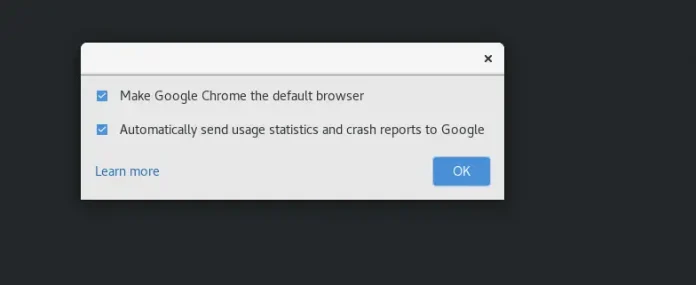Categorical Data is data that corresponds to the Categorical Variable. A Categorical Variable is a variable that takes fixed, a limited set of possible values. For example Gender, Blood group, a person having country residential or not, etc.
Characteristics of Categorical Data :
- This is mostly used in Statistics.
- Numerical Operation like Addition, Subtraction etc. on this type of Data is not possible.
- All the values of Categorical Data are in Categories.
- It usually uses the Array Data Structure.
Example :

Categorical Data
A Binary Data is a Data which uses two possible states or values i.e. 0 and 1.Binary data is mostly used in various fields like in Computer Science we use it as under name Bit(Binary Digit), in Digital Electronic and mathematics we use it as under name Truth Values, and we use name Binary Variable in Statistics.
Characteristics :
- The (0 and 1) also referred to as (true and false), (success and failure), (yes and no) etc.
- Binary Data is a discrete Data and also used in statistics.
Example :

Binary Data
Conversion of Categorical Data into Binary Data
Our task is to convert Categorical data into Binary Data as shown below in python :
Step-by-step Approach:
Step 1) In order to convert Categorical Data into Binary Data we use some function which is available in Pandas Framework. That’s why Pandas framework is imported
Python3
# import required moduleimport pandas as pd |
Step2) After that a list is created and data is entered as shown below.
Python3
# import required modulesimport pandas as pd# assign datadata = [["Jagroop", "Male"], ["Praveen", "Male"], ["Harjot", "Female"], ["Pooja", "Female"], ["Mohit", "Male"]] |
Step 3) After that Dataframe is created using pd.DataFrame() and here we add extra line i.e. print(data_frame) in order to show the Categorical Data Output as shown below:
Python3
# import required modulesimport pandas as pd# assign datadata = [["Jagroop", "Male"], ["Praveen", "Male"], ["Harjot", "Female"], ["Pooja", "Female"], ["Mohit", "Male"]]# display categorical outputdata_frame = pd.DataFrame(data, columns=["Name", "Gender"])print(data_frame) |
Output:

Categorical Data
Step 4) Till step 3 we get Categorical Data now we will convert it into Binary Data. So for that, we have to the inbuilt function of Pandas i.e. get_dummies() as shown:
Here we use get_dummies() for only Gender column because here we want to convert Categorical Data to Binary data only for Gender Column.
Python3
# import required modulesimport pandas as pd# assign datadata = [["Jagroop", "Male"], ["Praveen", "Male"], ["Harjot", "Female"], ["Pooja", "Female"], ["Mohit", "Male"]]# display categorical outputdata_frame = pd.DataFrame(data, columns=["Name", "Gender"])print(data_frame)# converting to binary datadf_one = pd.get_dummies(data_frame["Gender"])print(df_one) |

output of step 4
Here we get output in binary code for Gender Column only. Here we have two options to use it wisely:
- Add above output to Dataframe -> Remove Gender Column -> Remove Female column(if we want Male =1 and Female =0) -> Rename Male = Gender -> Show Output of Conversion.
- Add above output to Dataframe -> Remove Gender Column -> Remove Male column( if we want Male =0 and Female =1) -> Rename Female = Gender -> Show Output of Conversion.
In the below program we used the first option and Write code accordingly as shown below:
Python3
# import required modulesimport pandas as pd# assign datadata = [["Jagroop", "Male"], ["Praveen", "Male"], ["Harjot", "Female"], ["Pooja", "Female"], ["Mohit", "Male"]]# display categorical outputdata_frame = pd.DataFrame(data, columns=["Name", "Gender"])# print(data_frame)# converting to binary datadf_one = pd.get_dummies(data_frame["Gender"])# print(df_one)# display resultdf_two = pd.concat((df_one, data_frame), axis=1)df_two = df_two.drop(["Gender"], axis=1)df_two = df_two.drop(["Male"], axis=1)result = df_two.rename(columns={"Female": "Gender"})print(result) |
Output:

Output
Below is the complete program based on the above approach:
Python3
# Pandas is imported in order to use various inbuilt# Functions available in Pandas frameworkimport pandas as pd# Data is initialized heredata = [["Jagroop", "Male"], ["Parveen", "Male"], ["Harjot", "Female"], ["Pooja", "Female"], ["Mohit", "Male"]]# Data frame is created under column name Name and Genderdata_frame = pd.DataFrame(data, columns=["Name", "Gender"])# Data of Gender is converted into Binary Datadf_one = pd.get_dummies(data_frame["Gender"])# Binary Data is Concatenated into Dataframedf_two = pd.concat((df_one, data_frame), axis=1)# Gendercolumn is droppeddf_two = df_two.drop(["Gender"], axis=1)# We want Male =0 and Female =1 So we drop Male column heredf_two = df_two.drop(["Male"], axis=1)# Rename the Columnresult = df_two.rename(columns={"Female": "Gender"})# Print the Resultprint(result) |
Output:

Output





